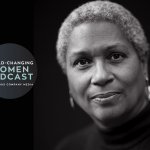How many times have you heard that millennials are the most sustainable generation of all time? Millennials are supposed to be the generation that’s solving climate change, reducing waste, and supporting green products around the world. The truth is quite different. Even though millennials claim to support environmentally friendly products and movements, their actions say otherwise.
Millennials are actually done with green brands. Here are five reasons why.
1. Green products aren’t as readily available
A study conducted by Ad Age surveyed millennials and asked them about green brands. When asked whether they could identify a brand that actively supports the environmental movement, over 50 percent couldn’t name a single one. The problem that millennials face with green products is that the marketing and distribution of these products is scattered. Millennials claim that they want to support green products and brands, but they’re often hard to find. Even though most millennials want to buy green products, they’re not necessarily willing to go to the farmers market, order from a small boutique online, or go out of their way to find one. Green products simply aren’t as readily available as other competitors.
2. Millennials think green products don’t work as well
Ask a millennial what they think of green cleaners and most will say something like, “I’m happy that they’re environmentally friendly but they just don’t work as well.” In interviews for a video for Cleancult (the nontoxic laundry detergent company that I founded), we asked millennials aged 18-30 what they actually thought about green cleaning brands. Common responses were that green cleaners smelled bad, were less effective, and didn’t satisfy their needs. These customers appreciated the environmental safety and health benefits, but found that the green products on the market simply weren’t good enough. For green products and services to compete for millennials’ attention, they can’t just be environmentally friendly; they must also be as effective and well designed.
3. Marketing and branding of green products doesn’t appeal to millennials
Most millennials claim that they care about the environment but they don’t identify with traditional environmental labels. According to a study by the Pew Research Center, only 32 percent of American millennials see themselves as environmentalists. This is in contrast to the 42 percent of Americans born between 1965 and 1980 who consider themselves as environmentalist, as well as 44 percent of those born after 1945. Millennials distrust environmental labeling and branding. With increased greenwashing, millennials are hesitant to buy green brands (on top of the fact that green branding leads to less confidence in the product.) Greenwashing saturates the market, making truly sustainable and effective brands less likely to be seen, heard and purchased.
4. Millennials think green products are too expensive
A recent study conducted by RetailMeNow found that 4 out of 5 consumers think environmentally friendly items are more expensive than non-green products. Additionally, 3 out of 5 (61 percent) of these respondents would only consider purchasing an environmentally friendly product if it cost the same or less than a non-green product. Before the customer ever has a chance to see the product price, he or she has already assumed it’s more expensive because it’s green. This assumption keeps many millennials from even considering a purchase.
5. There’s a lot of competition for millennial consumers
Shopping data on millennials can be misleading. Studies by Sustainable Brands and Eco Pulse claim that over 75 percent of millennials are willing to spend more to buy products that support sustainability. The problem is that these studies were collected by surveys and questionnaires. None of these studies actually looked at and reviewed millennial spending behavior. The reality of their spending is actually very different. According to a study conducted by Eco Pulse, there was actually a 15 percent drop in self-reported green purchases in 2014. Moreover, search trends for green products fell to 2012 levels. The truth is that with student loans, increased cost of living, and increased demand for consumer products, it’s tough to commit to sustainable products.
So, how do you market sustainable products to millennials?
To a large extent, millennials have written off green brands. The truth is that millennial customers simply aren’t willing to compromise. In my experience as both a millennial consumer and the founder of the nontoxic laundry company Cleancult, I’ve gained some insights on how to market sustainable products.
To market to millennials successfully, you must first convince them of why you have the most effective and well designed product and then support that with a genuinely sustainable supply chain. If companies radically shift their marketing, then we can bring about very different millennial purchasing patterns, helping them turn their good intentions into action. That could have a major impact. Millennials’ spending power is roughly $3.5 billion dollars annually. If a large share of this went to environmentally responsible purchasing, the global supply chain would be revolutionized.







